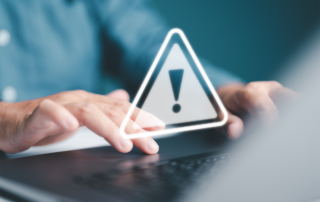Stressors in the workplace can have a profound impact on mental health. The Deloitte Mental Health 2022 Report revealed that more than 80% of respondents experienced at least one adverse symptom.
While these figures are alarming, business organizations have stepped up to provide employees with the support they need. Seven in 10 workers believe their employer is more concerned about employee mental health now than in the past, according to the results of APA’s 2022 Work and Well-being Survey.
However, research also reveals that 55% of US employees haven’t taken advantage of available resources. To bridge this gap, employers should create a culture that promotes help-seeking behavior where employees are encouraged to seek help for any issues they may be experiencing.
The Role of Leaders
Leaders play an essential role in creating a culture of help-seeking behavior. It is their responsibility to ensure that employees feel safe and supported when seeking help and to encourage them to do so.
Providing a wide range of mental and physical health resources isn’t enough if employees don’t feel comfortable reaching out. Leaders should ensure that their organization’s culture encourages help-seeking behavior and that mental health issues are openly discussed without fear of judgment or repercussions.
Leaders should “lead” from the front, be vocal about the importance of mental and physical health demonstrate their commitment by seeking help themselves. This will set an example for other employees and enable them to seek help without feeling ashamed or embarrassed.
Creating Grassroots “Mini Cultures”
Creating grassroots “mini-cultures” or groups can imbue a sense of community and support among employees. These mini-cultures allow employees to discuss and share their experiences with health issues in a non-judgmental environment. They also provide a platform to seek help from their peers. By creating a space for these critical conversations, organizations can normalize help-seeking behavior and start to chip away at the stigma around mental and physical health. When employees see that their peers are actively seeking help and engaging in open conversations about mental health, they, too, may become more likely to access resources for themselves.
Provide Industry-Relevant and Culturally Competent Mental Health Support
Since they don’t have the expertise on staff, many organizations have no option but to outsource resources. This can be problematic if the vendor isn’t aware of cultural competence or how to provide resources relevant and tailored to the specific industry.
While finding the “perfect” provider may be difficult, it helps if employers provide vendors with industry-specific resources and culturally competent information. Providing personalized details of what helps or hinders employees in their specific industry can help vendors provide better resources and support.
Communicating Effectively
Organizations must ensure that employees are aware of the resources available.
Employers should use a variety of communication channels to get the message out, including email, posters, intranet, newsletters, and staff meetings. Each communication channel should be tailored to the different demographic groups in the company.
Providing Multiple Types of Mental Health Resources
Both high-tech and low-tech approaches work best.
High-tech resources include online counseling, mental and physical health apps, and remote therapy. For example, free access to meditation and mindfulness apps can help employees manage stress and anxiety.
Low-tech resources can include in-person therapy, support groups, peer-to-peer mentoring programs, and workshops. For example, as part of the peer support groups, organizations could implement strategies to allow employees to request additional support from their peers.
Mental health is a critical issue that should be addressed in the workplace, but employees need to feel comfortable seeking help. By providing the right resources, creating grassroots “mini-cultures,” and providing culturally competent support, employers can help employees feel comfortable accessing the resources they need.
For more Employee Benefits information, contact INSURICA today.
Copyright © 2023 Smarts Publishing. This is not intended to be exhaustive nor should any discussion or opinions be construed as legal advice. Readers should contact legal counsel or an insurance professional for appropriate advice.
About the Author
Share This Story
Related Blogs
OSHA’s Safe and Sound Week Scheduled for Aug. 12-18
Each year, more than 5,000 workers are killed on the job. Additionally, more than 3.6 million employees are seriously injured each year while at work. Because of this, the Occupational Safety and Health Administration (OSHA) holds a nationwide event each August called Safe and Sound Week, which promotes the importance of companies incorporating safety and health programs into their workplace. This year, the event runs Aug. 12-18, 2024.
2024 Midyear Market Outlook: Workers’ Compensation
Profitable underwriting results have generated favorable conditions across the workers’ compensation insurance market for nearly a decade. According to the National Council on Compensation Insurance (NCCI), the segment produced combined ratios of 84.5 and 84.9 in 2022 and 2023, respectively, demonstrating continued profitability.
CrowdStrike, the Most Important Cyber Accumulation Loss Event Since NotPetya, Highlights Single Points of Failure
In what is being called “the most important cyber accumulation loss event since NotPetya,” the July 19, 2024, global technology outage (CrowdStrike) will produce scores of insurance claims across a range of policies, test cyber policy wordings,and sharpen the industry’s focus on single points of failure.







